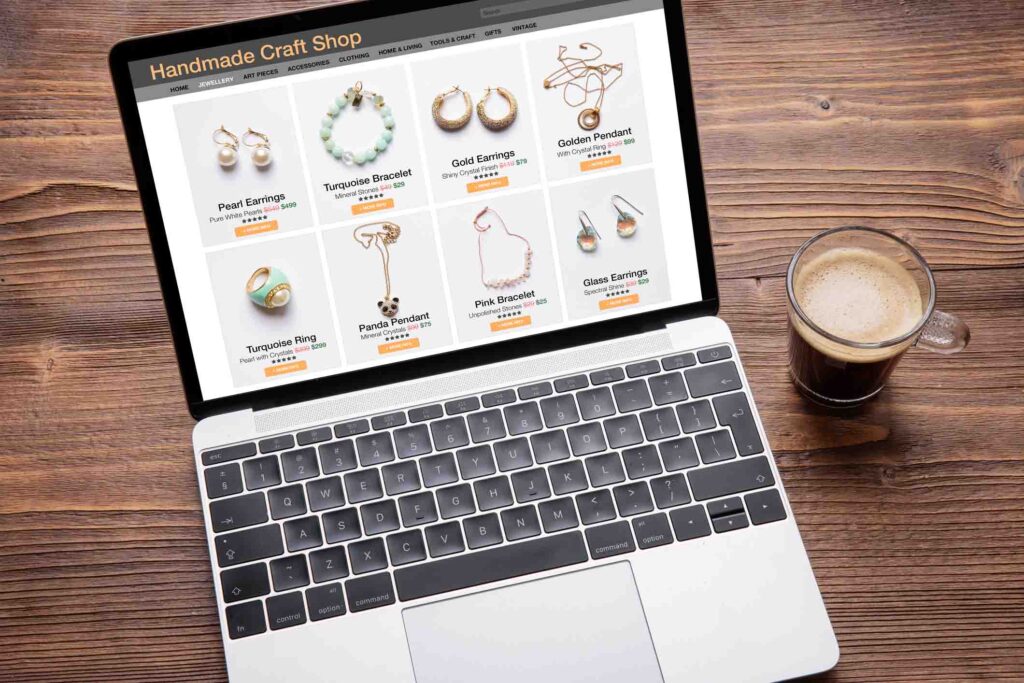Table of contents
Contributors
My main focus is managing the blog and product content for the Protectivity website ensuring everything aligns wi...
If you’re running a small business or are a sole trader in the UK, you already know that setting the right price for your products or services can be a bit of a juggling act. Get it wrong, and you could be leaving money on the table or driving customers away. Get it right, and you could see your profits soar.
Pricing isn’t just about sticking a number on a product; it’s a strategic decision that can make or break your business. For small businesses and sole traders, the challenges are unique. You might be competing against larger companies with deeper pockets, or you might be navigating the tricky waters of understanding your market and customer base with limited resources.
But don’t worry! This blog is here to help. Our aim is to provide you with practical tips and insights on how to price your products effectively to maximise profit. We’ll cover everything from understanding the true cost of your goods, to different pricing strategies, and even how to adjust prices without losing your loyal customers. Let’s dive in and start turning those pricing puzzles into profits!
Understanding the basics of pricing your products
Pricing can feel like a bit of a mystery, but it’s crucial for your business’s success. Let’s break it down into bite-sized pieces.

Defining Cost and Value
What’s the Difference?
Cost
This is all the money you spend to make your product or provide your service. Think of it as the sum of all expenses, including raw materials, labour, overheads, and even the cup of coffee you needed to get through the day.
Value
This is what your customers think your product or service is worth. It’s the perceived benefit they get from it, which can often be much higher than the actual cost.
Understanding the difference between these two is key. Cost is what you invest; value is what you hope to get back in return from your customers.
Calculating the cost of your products or services
To calculate your costs accurately, you need to consider several factors:
Direct Costs
These are costs directly tied to the production of your goods or services. For example, materials, direct labour, and production supplies.
Indirect Costs
These include overhead costs such as rent, utilities, and administrative expenses.
Fixed Costs
These are costs that do not change with the level of production, like rent and salaries.
Variable Costs
These fluctuate with production volume, like materials and direct labour.
Steps to Calculate Cost
List All Costs
Make a comprehensive list of all your direct and indirect costs.
Add Fixed and Variable Costs
Sum these costs to get a total cost figure.
Divide by Units
If you’re producing a product, divide the total cost by the number of units produced to get a per-unit cost. For example, if your total costs for a month are £10,000 and you produce 1,000 units, your cost per unit is £10.
Market research for pricing your products

Understanding your market
Market research might sound like you need a pro, but it’s just about knowing your market inside out. This means figuring out who your customers are, what they need, and how they behave.
Are they young tech enthusiasts or busy parents looking for time hacks? What problems do they have that your product can solve? Use surveys, social media, and even face-to-face chats to get a clear picture. Knowing your market helps you tailor your products and marketing strategies to meet their needs, making your business more relevant and appealing.
Competitor Analysis
It’s all about keeping an eye on what others in your field are doing. Who are your main competitors? What are their strengths and weaknesses? What pricing strategies do they use, and how do they market their products? Tools like SWOT analysis (Strengths, Weaknesses, Opportunities, Threats) can help you break down this information.
By understanding your competitors, you can identify gaps in the market, avoid their mistakes, and find ways to stand out. Remember, staying informed about your competition isn’t just about copying them—it’s about finding your unique edge.
Pricing Models

Cost-Plus Pricing
Pros
Simplicity – easy to calculate and implement.
Ensures Profit – guarantees that all costs are covered and a profit margin is included.
Transparency – customers can see how prices are derived, which can build trust.
Cons
Ignores market demand – doesn’t consider customer willingness to pay or market conditions.
Lacks competitive edge – if competitors use more sophisticated pricing models, you might lose out.
Inflexible – hard to adjust prices quickly in response to market changes.
Determine Desired Profit Margin
Sum up all direct and indirect costs associated with producing your product or service.
Decide on the percentage of profit you want to add on top of your costs.
Add your profit margin to the total cost to get the selling price. For example, if your product costs £10 to make and you want a 50% profit margin, the selling price would be £10 + (£10 * 0.50) = £15.
Value-Based Pricing
Value-based pricing is an approach where prices are set primarily based on the perceived value to the customer rather than on cost or competitor prices. This method allows businesses to capture more of the value they create, leading to higher profit margins.
Benefits include better alignment with customer needs, fostering customer loyalty, and differentiating from competitors.
To determine the value of products or services, businesses should engage with their customers through surveys and interviews, analyse competitors, understand the specific problems their products solve, and quantify the tangible and intangible benefits. By focusing on the unique value delivered, businesses can justify higher prices and improve their overall market position.
Dynamic Pricing
Dynamic pricing involves adjusting prices based on market demand, competition, and other external factors. Common examples include:
Airlines: Ticket prices fluctuate based on demand, time to departure, and seat availability.
Ride-sharing services: Prices increase during peak times or in high-demand areas.
E-commerce: Online retailers like Amazon adjust prices frequently based on competition and buying trends.
How to Implement Dynamic Pricing in Your Business
Use software and algorithms that monitor market conditions and automatically adjust prices.
Define the conditions under which prices will change, such as time of day, inventory levels, or competitor actions.
Continuously monitor the effectiveness of your pricing strategy and make adjustments as needed to optimise revenue.
Psychological pricing techniques

Price perception
Price perception is all about how customers view and interpret the prices of your products or services. It’s a crucial aspect of psychological pricing. For instance, pricing an item at £9.99 instead of £10 can make it seem significantly cheaper, even though the difference is just a penny.
This is because customers tend to focus on the first digit of a price and perceive the product as being in a lower price range. Another tactic is using tiered pricing to create a sense of value. Offering a “premium” version at a higher price can make the “standard” version seem like a better deal, even if the premium version has more features or benefits.
Discounts and promotions
Discounts and promotions can be powerful tools when used strategically. Offering a limited-time discount can create a sense of urgency, encouraging customers to buy now rather than later. However, it’s important to use discounts sparingly to avoid eroding your product’s perceived value. Frequent discounts can lead customers to expect lower prices and wait for sales rather than buying at full price, which can hurt your profit margins.
Consider the psychological impact of the discount format. For example, “Buy One, Get One Free” can be more appealing than a straightforward 50% off, even though the monetary value is the same. Effective use of discounts can boost sales without significantly impacting long-term profitability if done correctly.
Pricing for products vs. services
When it comes to pricing services, there are unique considerations to keep in mind. Services are often intangible and personalised, which means you need to factor in the time, expertise, and effort required to deliver them. Consider the value of your time, the complexity of the service, and the level of customisation involved.
Market rates and client expectations play a significant role. Since services can be harder to compare directly with competitors, it’s crucial to communicate the unique value and benefits you offer to justify your pricing.
On the other hand, pricing products involves different considerations. The cost of production, including materials, labour, and overhead, is a primary factor. You also need to account for inventory management and potential discounts for bulk purchases. Market demand, competition, and perceived value are critical in setting a competitive yet profitable price.
For products, pricing can often be more straightforward as customers can easily compare similar items across different sellers, making it essential to highlight any unique features or benefits your product offers to stand out.
Monitoring and adjusting prices
Tracking Performance of your pricing strategy is crucial to ensure it aligns with your business goals. Regularly monitor sales data, profit margins, and customer feedback to gauge how well your pricing is working.
Key performance indicators (KPIs) to track include sales volume, revenue, average transaction value, and customer acquisition and retention rates. Analysing these metrics helps you understand if your prices are driving sales and profitability or if adjustments are needed.
Adjusting Prices should be done thoughtfully and strategically. Consider changes in costs, market demand, and competitor pricing when deciding to adjust your prices. If your costs increase or market conditions shift, it might be time to raise prices.
Conversely, if sales are lagging, a price reduction or promotional discount could boost demand. When making price changes, communicate clearly and transparently with your customers, highlighting the reasons for the change and the value they continue to receive. This helps maintain trust and loyalty even when prices go up.
Additional Resources
Pricing Calculators
Omni Calculator: This free online tool helps you easily calculate cost-plus pricing.
Shopify Profit Margin Calculator: A simple tool to calculate profit margins and set competitive prices.
Market Research Tools
SurveyMonkey: Conduct surveys to understand your customer preferences and willingness to pay.
Google Trends: Analyse market trends and see how certain products or services are performing in the market.
Competitor Analysis Tools
SimilarWeb: Provides insights into competitor website traffic and marketing strategies.
SEMrush: Offers tools for competitor research, including traffic analytics and keyword research.
Get Small Business insurance with Protectivity
Effective pricing for profit is crucial for small businesses, as it ensures financial stability by covering all costs, including insurance, and allows for sustainable growth and competitiveness in the market.
Contributing to this having appropriate insurance can provide financial protection against the risks that might occur during your business activities, allowing you to operate with confidence, without the worry of unforeseen expenditure.
Protectivity’s small business insurance has been specifically created to support you in the event that claims are brought against your business. Public liability is automatically included and protects you if you’re sued by a third party; for example, for an injury or property damage suffered by a client or member of the public. There’s also Employers’ Liability for anyone with a team, ensuring that you’re protected against claims from workers who become injured or ill.
Find out more and get an instant quote suited to your needs.
Get Small Business Insurance from Protectivity
*Disclaimer – This blog has been created as general information and should not be taken as advice. Make sure you have the correct level of insurance for your requirements and always review policy documentation. Information is factually accurate at the time of publishing but may have become out of date.
Last updated by



































